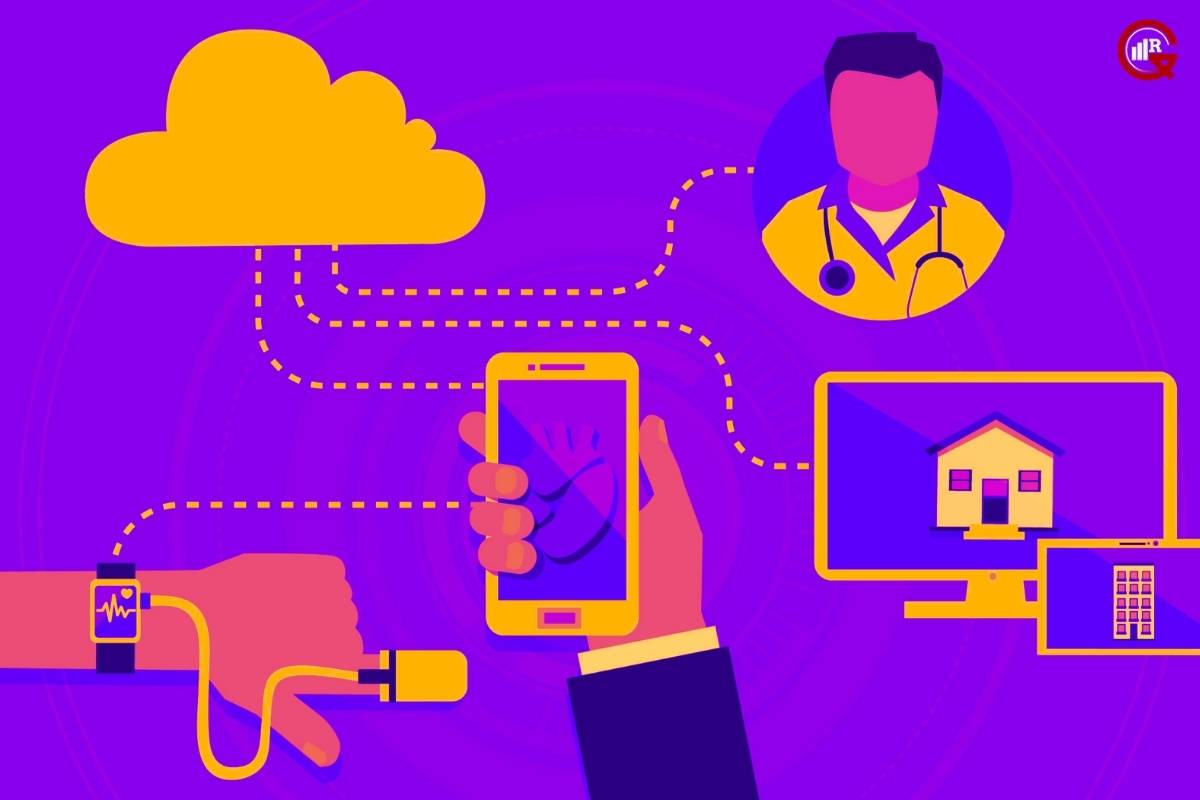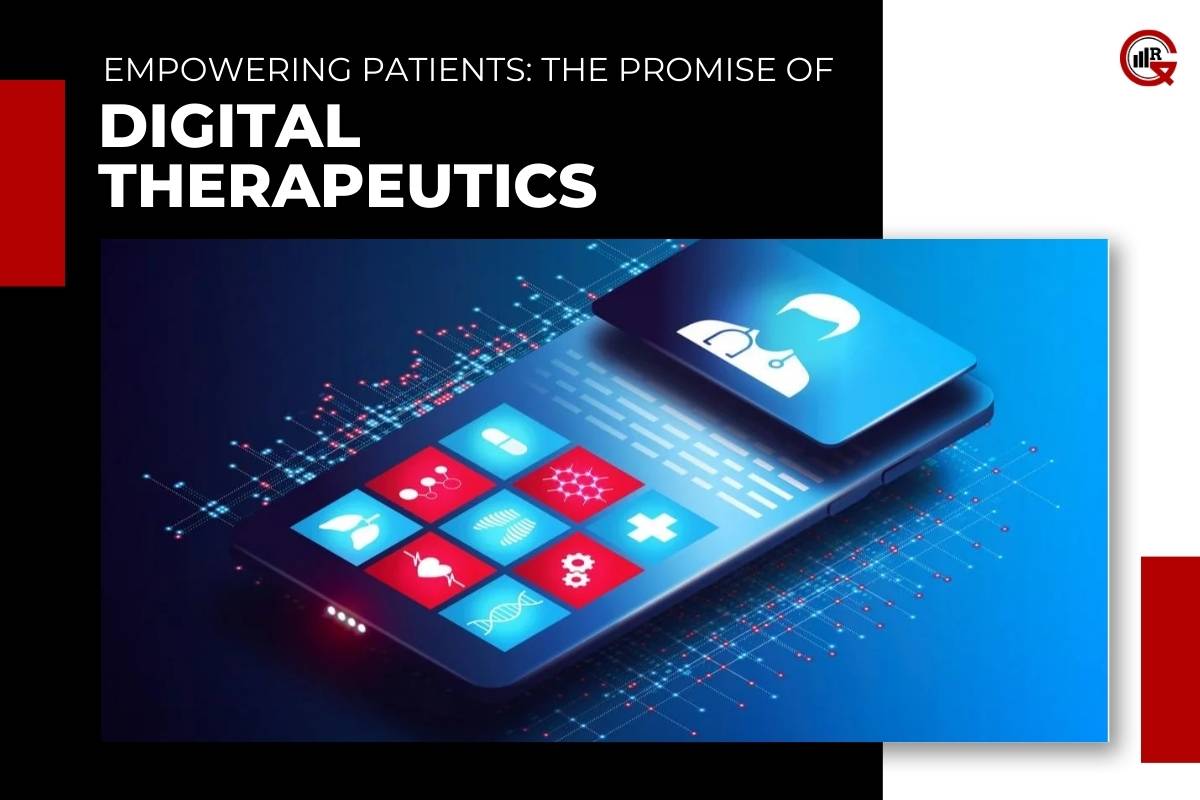(Source-ArtemisDiana_Shutterstock.com)
In the rapidly changing landscape of healthcare, a revolutionary advancement is garnering significant interest in digital therapeutics. With increasing global technological integration, the fusion of healthcare with digital solutions has paved the path for inventive methods of delivering impactful treatments and improving patient results. Known as digital therapeutics, or DTx, these interventions mark a pivotal change in how we address and handle diverse health issues, utilizing the effectiveness of software and data to supplement, and occasionally replace, conventional medical approaches.
Understanding Electronic Therapy
Electronic therapy, a burgeoning form of medical treatment, is characterized by evidence-based interventions delivered through specialized software programs to prevent, manage, or treat various medical conditions. Presently, a plethora of electronic therapy products are either available or in development, catering to diverse health concerns such as diabetes, oncology treatment management, and neuropsychiatric disorders like anxiety disorder, depression, and substance use disorder. Offering greater flexibility than traditional treatment modalities, electronic therapy is adept at addressing the individual needs of patients.
The Evolution of Digital Therapeutics

While not an entirely novel concept, electronic therapy has garnered renewed attention owing to recent technological advancements and a burgeoning body of clinical evidence. Initial iterations of electronic therapy primarily concentrated on behavioral interventions, such as cognitive-behavioral therapy for mental health disorders or digital aids for smoking cessation. However, as the field has progressed, we’ve witnessed the development of more sophisticated solutions targeting chronic ailments like diabetes, hypertension, and even neurological disorders such as Parkinson’s disease.
How Digital Therapeutics Operates?
Electronic Therapy operates on the premise of delivering precise interventions to patients via software programs or interconnected devices. These interventions can assume myriad forms, including interactive applications, virtual reality simulations, wearable sensors, or even prescription video games. Leveraging data analytics and machine learning algorithms, these platforms can tailor and refine treatment protocols based on individual patient profiles, behavior patterns, and real-time feedback.
For instance, a digital therapeutic geared towards assisting patients in managing diabetes might incorporate features such as blood glucose monitoring, meal tracking, medication reminders, and personalized coaching to foster healthy lifestyle habits. Through continuous monitoring and feedback mechanisms, patients can gain insights into their condition, make well-informed decisions, and ultimately enhance their health outcomes.
Clinical Validation and Regulatory Framework

A cornerstone of Digital Therapeutics lies in its reliance on clinical validation to substantiate safety, efficacy, and adherence to regulatory standards. Unlike run-of-the-mill consumer wellness apps, which may lack rigorous validation, electronic therapy undergoes meticulous scrutiny in clinical trials to assess their impact on patient outcomes. Regulatory bodies like the U.S. Food and Drug Administration (FDA) have acknowledged the potential of electronic therapy and have instituted pathways for their approval.
In 2017, the FDA granted marketing authorization to the first prescription digital therapeutic for the treatment of substance use disorder. Subsequently, several other electronic therapies have received regulatory clearance for diverse indications, underscoring the growing acceptance of these interventions within the healthcare milieu.
The Potential of Electronic Therapy
The ascendancy of electronic therapy holds immense promise for revolutionizing healthcare delivery and tackling some of the most pressing challenges confronting the industry. Here are the key benefits associated with electronic therapy:
- Accessibility: Electronic therapy possesses the capacity to reach patients in remote or underserved regions, thereby granting access to high-quality care irrespective of geographical constraints.
- Personalization: By harnessing data analytics and machine learning, electronic therapy can customize interventions to align with the unique needs and preferences of individual patients, fostering greater engagement and adherence.
- Cost-effectiveness: In comparison to conventional medical interventions, electronic therapy harbors the potential to curtail healthcare costs by streamlining care delivery, mitigating hospital admissions, and averting complications associated with chronic diseases.
- Real-time Monitoring: Facilitated by continuous monitoring and feedback mechanisms, electronic therapy enables healthcare providers to monitor patient progress in real-time, discern trends, and intervene proactively when necessary.
- Patient Empowerment: By endowing patients with autonomy over their health through education, self-monitoring, and personalized interventions, Digital Therapeutics empowers individuals to assume an active role in managing their conditions.
Challenges and Considerations
Despite the undeniable potential of electronic therapy, several challenges and considerations necessitate attention to maximize their impact:

- Regulatory Hurdles: Navigating the intricate regulatory landscape remains a formidable challenge for developers of digital therapeutics, necessitating robust evidence generation and compliance with evolving standards.
- Integration with Healthcare Systems: Integrating electronic therapy into extant healthcare frameworks presents technical, logistical, and interoperability challenges, demanding collaborative efforts among technology providers, healthcare entities, and policymakers.
- Data Privacy and Security: Given that electronic therapy entails the collection and processing of sensitive health data, safeguarding data privacy and security assumes paramount importance in fostering patient trust and compliance with regulatory mandates.
- Digital Divide: Socioeconomic factors and inequities in access to technology may exacerbate extant disparities in healthcare access, curbing the reach and efficacy of electronic therapy.
The Road Ahead
Notwithstanding these challenges, the horizon appears promising for digital therapeutics as they continue to gain traction and acceptance within the healthcare domain. With ongoing technological advancements, we anticipate further innovations in electronic therapy, broadening their purview to address a gamut of health conditions and enhancing their efficacy through personalized, data-driven interventions. Furthermore, the burgeoning emphasis on value-based care, patient-centric paradigms, and the assimilation of digital health technologies into clinical practice is poised to propel the adoption of electronic therapy as an integral facet of contemporary healthcare delivery.
In summation, Digital Therapeutics epitomizes a transformative force in healthcare, proffering personalized, evidence-based interventions with the potential to revolutionize disease prevention, management, and treatment. By harnessing the potency of technology, data, and clinical acumen, electronic therapy holds the promise of inaugurating a new epoch in healthcare characterized by enhanced accessibility, efficiency, and patient-centeredness. As we embark on this journey, concerted collaboration among stakeholders across the healthcare spectrum will be indispensable in realizing the full potential of electronic therapy in ameliorating health outcomes and enriching the quality of life for patients worldwide.
Conclusion:
In conclusion, Digital Therapeutics represents a transformative leap forward in healthcare, offering personalized, evidence-based interventions that have the potential to revolutionize disease prevention, management, and treatment. By leveraging the power of technology, data, and clinical expertise, electronic therapy paves the way for a new era of healthcare delivery that is characterized by enhanced accessibility, efficiency, and patient-centeredness.
Despite their immense promise, the widespread adoption of electronic therapy faces significant challenges, including regulatory hurdles, integration with existing healthcare systems, data privacy and security concerns, and addressing the digital divide. However, with concerted efforts from stakeholders across the healthcare spectrum, these obstacles can be overcome, unlocking the full potential of electronic therapy to improve health outcomes and enrich the quality of life for patients worldwide.
As we move forward, it is essential to prioritize patient-centered approaches and ensure equal access to digital therapeutics interventions. By fostering collaboration, innovation, and regulatory coherence, we can harness the transformative power of electronic therapy to create a healthcare system that is accessible, effective, and equitable for all. The future of healthcare is digital, and embracing electronic therapy is key to unlocking its full potential in improving global health and well-being.






